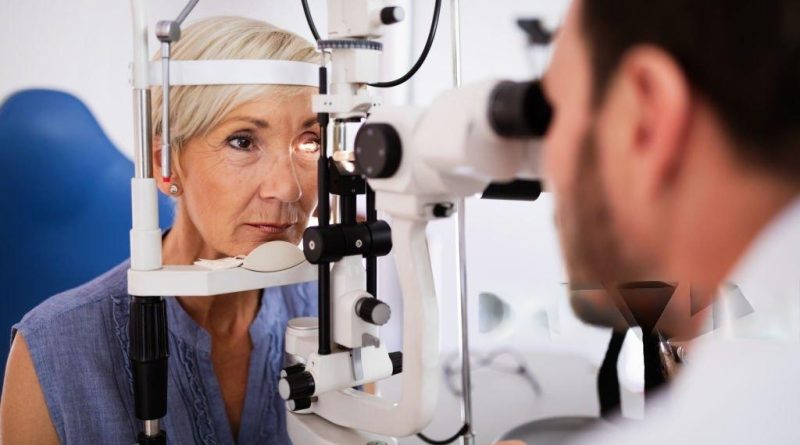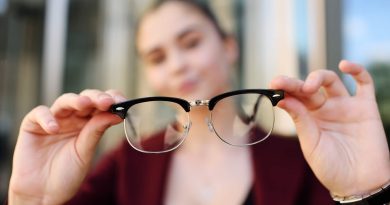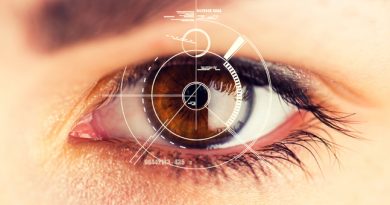Eye Health: Common Conditions and Treatments
Eye health is a crucial aspect of overall well-being, as our eyes are essential for daily activities and quality of life. Regular eye exams and awareness of common eye conditions can help maintain good vision and prevent serious eye diseases. This guide covers some of the most common eye conditions, their symptoms, and available treatments, ensuring you are well-informed about maintaining optimal eye health.
Understanding the Eye
Anatomy of the Eye
- Cornea: The clear, dome-shaped surface that covers the front of the eye.
- Iris: The colored part of the eye that controls the size of the pupil.
- Pupil: The opening in the center of the iris that allows light to enter.
- Lens: Focuses light onto the retina.
- Retina: The light-sensitive layer at the back of the eye that converts light into electrical signals.
- Optic Nerve: Transmits visual information from the retina to the brain.
Common Eye Conditions
1. Refractive Errors
Types of Refractive Errors
- Myopia (Nearsightedness): Difficulty seeing distant objects clearly.
- Hyperopia (Farsightedness): Difficulty seeing close objects clearly.
- Astigmatism: Distorted or blurred vision at all distances due to an irregularly shaped cornea.
- Presbyopia: Age-related condition where the eye’s lens loses flexibility, making it hard to focus on close objects.
Symptoms
- Blurry vision
- Headaches
- Eye strain
- Difficulty reading or seeing distant objects
Treatments
- Eyeglasses: Corrective lenses to compensate for refractive errors.
- Contact Lenses: Provide a wider field of vision than glasses.
- Refractive Surgery: Procedures like LASIK, PRK, or SMILE to reshape the cornea and correct vision.
2. Cataracts
Symptoms
- Cloudy or blurred vision
- Difficulty seeing at night
- Sensitivity to light and glare
- Fading or yellowing of colors
- Double vision in one eye
Treatments
- Surgery: The cloudy lens is removed and replaced with an artificial intraocular lens (IOL). Cataract surgery is a common and safe procedure that restores clear vision.
3. Glaucoma
Symptoms
- Open-Angle Glaucoma: Gradual loss of peripheral vision, often unnoticed until advanced stages.
- Angle-Closure Glaucoma: Sudden eye pain, headache, nausea, vomiting, blurred vision, and halos around lights.
Treatments
- Medications: Eye drops or oral medications to lower intraocular pressure (IOP).
- Laser Therapy: Procedures like trabeculoplasty to improve drainage of aqueous humor.
- Surgery: Trabeculectomy or shunt procedures to create a new drainage pathway.
4. Age-Related Macular Degeneration (AMD)
Symptoms
- Blurred or reduced central vision
- Difficulty recognizing faces
- Straight lines appearing wavy
- A dark or empty area in the center of vision
Treatments
- Anti-VEGF Injections: Medications injected into the eye to slow vision loss in wet AMD.
- Photodynamic Therapy: Uses a light-activated drug to destroy abnormal blood vessels in the eye.
- Nutritional Supplements: High-dose vitamins and minerals to slow progression in dry AMD.
5. Diabetic Retinopathy
Symptoms
- Spots or floaters in vision
- Blurred vision
- Dark or empty areas in vision
- Difficulty seeing colors
- Vision loss
Treatments
- Control Blood Sugar: Maintaining good blood sugar levels to prevent progression.
- Laser Treatment: Focal laser treatment to seal leaking blood vessels or scatter laser treatment to shrink abnormal blood vessels.
- Vitrectomy: Surgical removal of the vitreous gel to treat severe bleeding or retinal detachment.
6. Dry Eye Syndrome
Symptoms
- Stinging, burning, or scratchy sensation in the eyes
- Sensitivity to light
- Redness
- Blurred vision
- Watery eyes
Treatments
- Artificial Tears: Over-the-counter or prescription eye drops to lubricate the eyes.
- Medications: Prescription eye drops to reduce inflammation and increase tear production.
- Punctal Plugs: Small plugs inserted into the tear ducts to retain moisture.
- Lifestyle Changes: Reducing screen time, using a humidifier, and protecting eyes from wind and dry air.
7. Conjunctivitis (Pink Eye)
Symptoms
- Redness in one or both eyes
- Itchiness
- Discharge that forms a crust during sleep
- Tearing
Treatments
- Viral Conjunctivitis: Usually resolves on its own; cold compresses and artificial tears can provide relief.
- Bacterial Conjunctivitis: Antibiotic eye drops or ointments.
- Allergic Conjunctivitis: Antihistamine eye drops and avoiding allergens.
8. Amblyopia (Lazy Eye)
Symptoms
- Poor vision in one eye
- Eyes not working together
- Squinting or shutting one eye
- Head tilting
Treatments
- Corrective Lenses: Glasses or contact lenses to correct refractive errors.
- Eye Patching: Covering the stronger eye to force the weaker eye to work harder.
- Vision Therapy: Exercises to improve eye coordination and focus.
9. Strabismus (Crossed Eyes)
Symptoms
- Misaligned eyes
- Double vision
- Loss of depth perception
- Eye strain or fatigue
Treatments
- Eyeglasses or Contact Lenses: Correct vision problems contributing to strabismus.
- Prism Lenses: Special lenses to reduce the amount of eye turning needed.
- Vision Therapy: Exercises to improve eye coordination.
- Surgery: Adjusting the muscles of the eye to correct alignment.
Preventive Measures for Eye Health
Regular Eye Exams
- Frequency: Adults should have a comprehensive eye exam every two years, or more frequently if they have risk factors for eye diseases.
- Children: Regular eye exams should start before school age and continue as recommended by a pediatrician or eye doctor.
Protecting Your Eyes
- Sunglasses: Wear sunglasses that block 100% of UVA and UVB rays.
- Safety Eyewear: Use protective eyewear for sports, work, and activities that pose a risk to the eyes.
- Screen Time: Follow the 20-20-20 rule: Every 20 minutes, look at something 20 feet away for at least 20 seconds.
Healthy Lifestyle
- Diet: Eat a diet rich in fruits, vegetables, and omega-3 fatty acids to support eye health.
- Smoking Cessation: Avoid smoking, as it increases the risk of eye diseases.
- Exercise: Regular physical activity to maintain overall health and reduce the risk of diabetes and hypertension, which can affect eye health.
Managing Chronic Conditions
- Diabetes and Hypertension: Keep these conditions under control to prevent complications like diabetic retinopathy and hypertensive retinopathy.
Advanced Treatments and Technologies
Laser Eye Surgery
Laser eye surgery is a popular method to correct refractive errors. The most common types include:
- LASIK (Laser-Assisted In Situ Keratomileusis): Reshapes the cornea to correct vision.
- PRK (Photorefractive Keratectomy): Removes a small amount of the corneal surface to reshape the cornea.
- SMILE (Small Incision Lenticule Extraction): Removes a small piece of corneal tissue to change its shape and improve vision.
Intraocular Lenses (IOLs)
Intraocular lenses are artificial lenses used to replace the eye’s natural lens during cataract surgery. There are different types of IOLs, including:
- Monofocal IOLs: Provide clear vision at one distance, usually far.
- Multifocal IOLs: Offer clear vision at multiple distances, reducing the need for glasses.
- Toric IOLs: Correct astigmatism in addition to cataracts.
Anti-VEGF Therapy
Anti-VEGF (vascular endothelial growth factor) therapy involves injecting medications into the eye to treat conditions like AMD and diabetic retinopathy. These medications inhibit the growth of abnormal blood vessels that can cause vision loss.
Stem Cell Therapy
Stem cell therapy is an emerging field in ophthalmology, with the potential to treat a variety of eye conditions. Researchers are exploring ways to use stem cells to repair damaged retinal cells and restore vision.
Innovations in Eye Care
Telemedicine
Telemedicine has become an essential tool in eye care, especially during the COVID-19 pandemic. It allows patients to consult with their eye doctors remotely, using video conferencing and other digital communication tools. This technology is particularly useful for follow-up appointments and managing chronic eye conditions.
Wearable Technology
Wearable technology, such as smart contact lenses and augmented reality glasses, is advancing rapidly. These devices can monitor eye health, track changes in vision, and even provide real-time information and alerts to users.
Artificial Intelligence (AI)
AI is revolutionizing the field of ophthalmology by enhancing diagnostic accuracy and treatment planning. AI algorithms can analyze large datasets of eye images to detect diseases like diabetic retinopathy, glaucoma, and AMD with high precision. This technology helps eye care professionals make more informed decisions and improve patient outcomes.
Maintaining Good Eye Health
Diet and Nutrition
Eating a balanced diet is crucial for maintaining good eye health. Some key nutrients that support eye health include:
- Vitamin A: Essential for maintaining the health of the retina and good night vision. Found in foods like carrots, sweet potatoes, and leafy green vegetables.
- Vitamin C: An antioxidant that helps protect the eyes from damage caused by free radicals. Found in citrus fruits, strawberries, and bell peppers.
- Vitamin E: Another antioxidant that helps protect the eyes. Found in nuts, seeds, and vegetable oils.
- Omega-3 Fatty Acids: Important for maintaining the health of the retina and preventing dry eyes. Found in fatty fish like salmon, mackerel, and sardines.
- Zinc: Helps maintain the health of the retina and can prevent age-related vision loss. Found in meat, shellfish, and legumes.
Lifestyle Choices
- Avoid Smoking: Smoking increases the risk of developing cataracts, AMD, and other eye diseases.
- Wear Protective Eyewear: Protect your eyes from injury and UV radiation by wearing sunglasses and safety glasses.
- Take Breaks from Screens: Reduce eye strain by taking regular breaks from screens. Follow the 20-20-20 rule to relax your eyes.
- Maintain a Healthy Weight: Being overweight increases the risk of diabetes and other conditions that can lead to eye problems.
Regular Check-Ups
Regular eye exams are essential for detecting eye problems early and maintaining good vision. During an eye exam, your eye doctor will:
- Check Your Vision: Assess your ability to see clearly at different distances.
- Examine Your Eyes: Look for signs of eye diseases and other problems.
- Measure Eye Pressure: Check for glaucoma.
- Test Eye Coordination: Ensure your eyes work well together.
Maintaining good eye health involves regular check-ups, a healthy lifestyle, and prompt attention to any changes in vision. By understanding common eye conditions and their treatments, individuals can take proactive steps to protect their vision and ensure early detection of potential problems. Regular eye exams, protective measures, and healthy habits are key components of a comprehensive approach to eye health. Advanced treatments and technologies are continually improving the field of ophthalmology, offering new solutions for managing and preventing eye diseases. By staying informed and making informed choices, you can enjoy good vision and eye health throughout your life.



